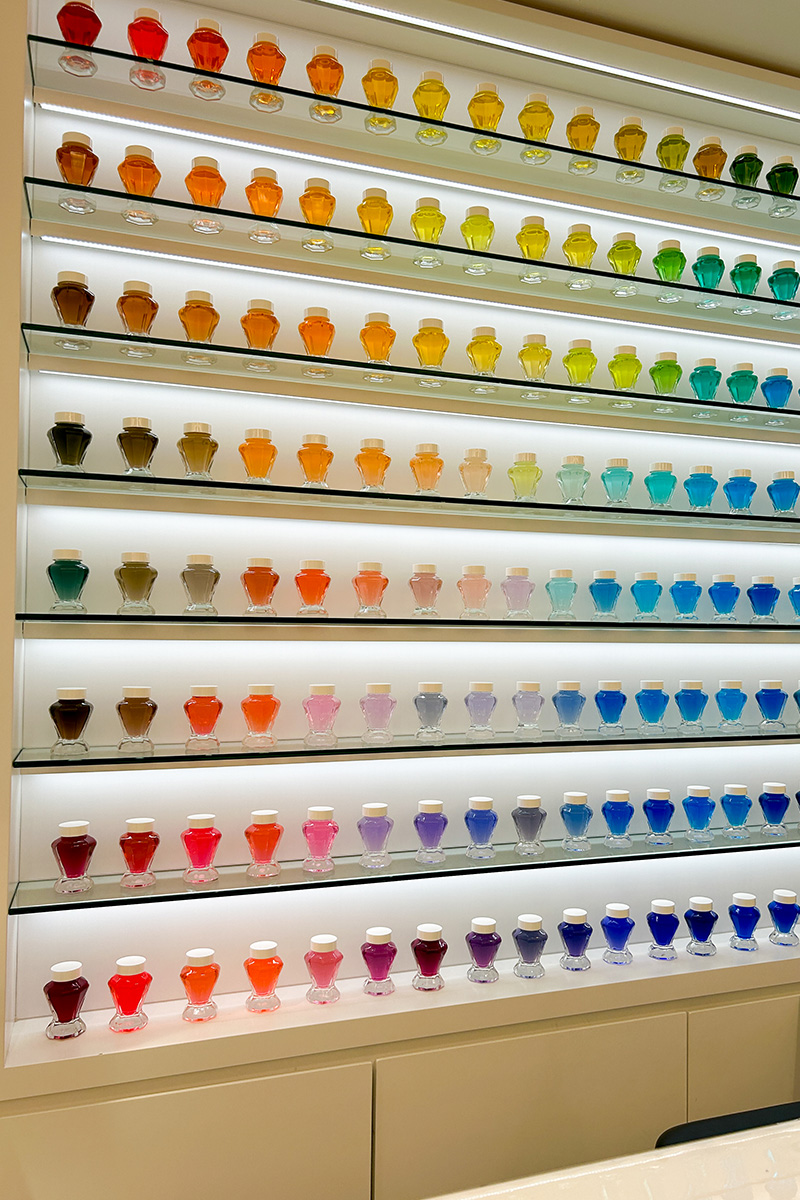
Today, I’m sharing with you 4 calligraphy tools that will make writing and practicing easier—simple tools that you might not have, but actually need. I’m sure you already have the basic tools to get better at calligraphy, and here are some more that could make you an even more efficient calligrapher.
1 :: GUM ARABIC POWDER
Bleeding ink? Feathering? Too runny? Ink not adhering to paper? Gum arabic powder is the answer to these calligrapher woes. This fine white powder was useful to my different bottles of runny inks (yep, that’s you, Daler Rowney). It also adds viscosity to the inks I mixed using gouache. It made the gouache mixture slightly thicker yet smoother, making it a joy to write with. The result is a semi-glossy finish and a bit of a raised texture when dried.
For envelope calligraphy, it is definitely a nightmare when you have no control over the paper. If the ink keeps on bleeding on the envelopes supplied to you, you can add a few drops of gum arabic to your pre-mixed ink.
I usually have a small jar of liquid gum arabic handy for emergencies. So how do you mix it, exactly? Have a small airtight jar, dropper, stirrer and warm distilled water ready. I use about 1 part powder to 10 parts water, then I add more water using the dropper if it’s too thick. Warm water makes it easier to mix. Afterwards I just use a few drops of this mixture to a small jar of ink before using.
A rule of thumb is to not mix gum arabic mixture to a large bottle of ink as it might get mouldy and will therefore make the entire bottle useless. Not keen on mixing? There is also liquid gum arabic available in stores.
2 :: INK HOLDER
An ink holder, or inkwell, is a super tool that makes writing convenient for calligraphers. It prevents spills, basically, as accidents caused by knocking a jar full of ink can be a common scenario.
Ink holders come in may forms, but I love my wooden dinky dip and the larger one pictured above. Some ink holders also have a slanted base so it’s easier to dip into. Not keen on buying one? Try sticking a small jar of ink onto a clump of play-doh for some stability. Tilt the jar onto the clay for easier dipping.
3 :: WHITE PENCIL
The white pencil is probably one of the tools that I didn’t buy right away, but I’m telling you now that this is a very important tool in calligraphy. Dark paper lined with a lead pencil is just so difficult to see! An affordable option would be a chalk pencil (it’s eraseable!). Going for pro? The slightly more expensive mechanical fabric pencil by Fons & Porter is my favourite and will last you ages.
4 :: PEN REST
I honestly have several of these! Clay ones and wooden ones are part of my collection, and these pen rests keep my desk organised. I have a few calligraphy holders out at a time, usually around three, and they are all sitting on the pen rest on my desk.
When writing calligraphy, it’s best to use a pen rest for your holders to prevent drips on your desk (or worse, your paper!) and keep your workspace a tad neater. Not keen on wooden pen rests? Chopstick rests come in porcelain and ceramic and can be used for calligraphy pens as well.
There you have it! Four calligraphy tools that would make calligraphy writing easier. Happy inking!




Leave a Reply